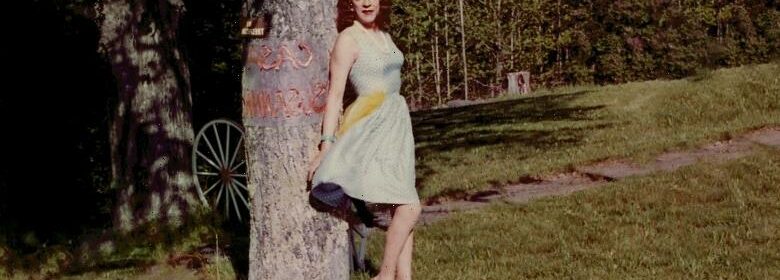‘Casa Susanna’ Review: A Lost Chapter of Queer History Comes to Life

In the tireless drive toward progress, it’s easy to forget the past. When it comes to queer history, discrimination and fear of persecution discouraged, if not actively erased, the documenting of queer life. Queer historians have had to fight tooth and nail to reclaim countless writers, artists, and musicians, even if they lived quite openly during their lifetimes. After all, if Emily Dickinson could write her “hot and feverish” letters to Susan without academia recognizing her queerness until recently, what chance was there for everyday queer people of yore?
Brilliantly, a nearly lost chapter of queer history has been delicately excavated in “Casa Susanna,” a sumptuous documentary about an oasis where trans women and crossdressing men found community throughout the 1950s and ’60s. Prolific French filmmaker Sebastien Lifshitz (“Bambi,” “Little Girl”) vividly brings the past to life through crackling archival footage, incredible photographs, and the golden memories of those who first found themselves there. So rare are portraits of early queer life, watching “Casa Susanna” feels like unearthing a precious treasure, a vital story of resilience and joy that was plucked from the ravages of time before being washed away forever.
“People used to love to be here. They had total freedom. A total chance to be themselves,” says Katherine Cummings, an erudite nonagenarian who guides much of the film through her charming narration. (“Ships! Remember ships?” she chuckles at one point.) The film opens with Katherine’s first visit to the old property in the Catskills, now mostly abandoned and derelict, then named Casa Susanna after its ringleader and hostess with the mostest. Though it’s just a few empty buildings in a lush green valley, Katherine summons Casa Susanna’s glory days before our eyes, painting a picture with the vibrant glow of her memories.
She points out the theater, at one point known as the Bungalow Colony, that once hosted popular female impersonator shows attended by the small town’s mayor. As the Borscht belt comedians were making the rounds in the area, audiences were also flocking to the Bungalow Colony for some more decorated discoveries. Drawing on research from photographic historian Isabelle Bonnet, Lifshitz pieces together the origin story of this fabulous Catskills paradise that hosted weekend get-togethers for transgender women and crossdressing men all summer long.
“Casa Susanna”
One of the film’s more unexpected delights is Gregory Bagarozy, whose grandmother Maria owned the property and was married to Susanna, also known as Tito. Sporting a New York accent and a thick mustache, this sturdy middle-aged Italian guy narrates the unusual circumstances of his childhood with surprising warmth and nuance, revealing a sensitive soul who fully appreciates the safe haven his grandparents built. He cogently explains the terror of the McCarthy era, when anyone caught crossdressing or in a gay bar could be arrested and blacklisted from any legitimate employment. He deftly illustrates his grandmother’s relationship with Susanna/Tito, often speaking of them as two different people and switching pronouns effortlessly. One wants to reach through the screen and kiss him when he brightly concludes, “So I guess they were lesbians!”
Though her memories of Casa Susanna are fuzzy, the power of the place is best illustrated by Diana Merry-Shapiro, who mustered the courage to transition after her time there. A brilliant redhead and former research scientist for Xerox, she describes “this incredible feeling of exaltation that was sublime” when remembering her first steps as a woman at Casa Susanna. “It was something I could never have hoped could happen.”
The film gently navigates the shifting mores and language around gender expansive identities, allowing the older trans women to self-identify and using their language as a guidepost. It’s not too often you hear the words crossdresser, transvestite, and transsexual these days, but it only adds to the film’s appeal as a rare time capsule. Fascinatingly, Casa Susanna was strictly for “straight men,” and their wives often accompanied them on their weekends upstate. The fear of being outed as gay followed them, creating strict divides.
Of course, places like Casa Susanna still exist for avowed crossdressers, as does a robust community of trans lesbians. Trans and queer folks today still face many challenges, but a quick Google search can at least give someone language for what they’re feeling, if not lead them to resources and community. In the Casa Susanna days, everyone was thrown together to figure it out on their own. That they found each other at all feels like a fairytale, and that we now have a cinematic record of it is a rare and precious gift.
Grade: A-
“Casa Susanna” premiered at the 2022 Venice Film Festival. It is currently seeking distribution.
Source: Read Full Article

